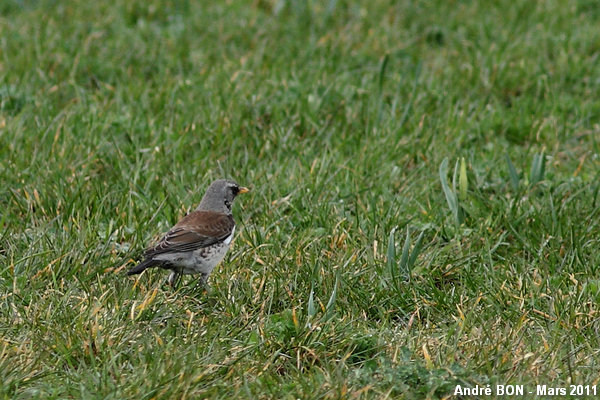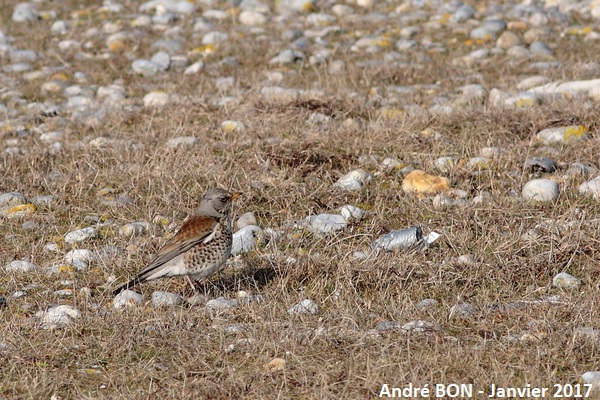

| Fieldfare (Turdus pilaris (Linnaeus,1758)) |


|
|
Scientific name: Turdus pilaris (Linnaeus,1758) Common name: Fieldfare French name: Grive litorne Order: Passeriformes Family: Turdidae Size: Body size: 25 to 26 cm; Weight: 80 to 140 g; Wingspan: 39 to 42 cm. Habitat: Woodland areas and woodland edges next to damp meadows or marshes. Open areas with sparser vegetation in winter, farming areas, cultivated fields, etc. Food: The Fieldfares generally look for food in small flock. They feed on worms, slugs, insects and spiders caught on the ground and also fruits and berries in winter. Nesting: Fieldfares nest in loose colonies in northern regions. The cup-shaped nest is built with grass and mud. It is located high on a tree branch fork. There are 5 to 6 eggs per brood. Migration: In winter, Fieldfares move southwards to western Europe and to southern Europe, north of the Mediterranean sea. Geographic area: Scandinavia and central Siberia in summer. Southern and western Europe in winter. |
The head, the back of the neck and the rump are grey. The upper parts are brown and the tail is black. The under side of the body is whitish with a yellowish orange wash on the chest and dark streaks rather located on the front part and on the lateral sides. The under side of the wings is white. The bill is yellow. The legs are blackish. Females and males are similar. Juveniles are dull brown. |
| [To know more about the Fieldfare] [Next picture] [Top] |

|
My short stay on the Texel Island was rather planned to observe seashore birds. I have seen a small flock of Fieldfares crossing a damp meadow. These birds were certainly doing a short stop during their migration towards their northern summer range. |
| [To know more about the Fieldfare] [Previous picture] [Top] |

|
I observed this Fieldfare during a walk in Hâble d'Ault, not far from the Baie de Somme. This is certainly a northern bird that spends its winter period here. |